What is the 2024 forecast for Oregon wildfires? Experts weigh in
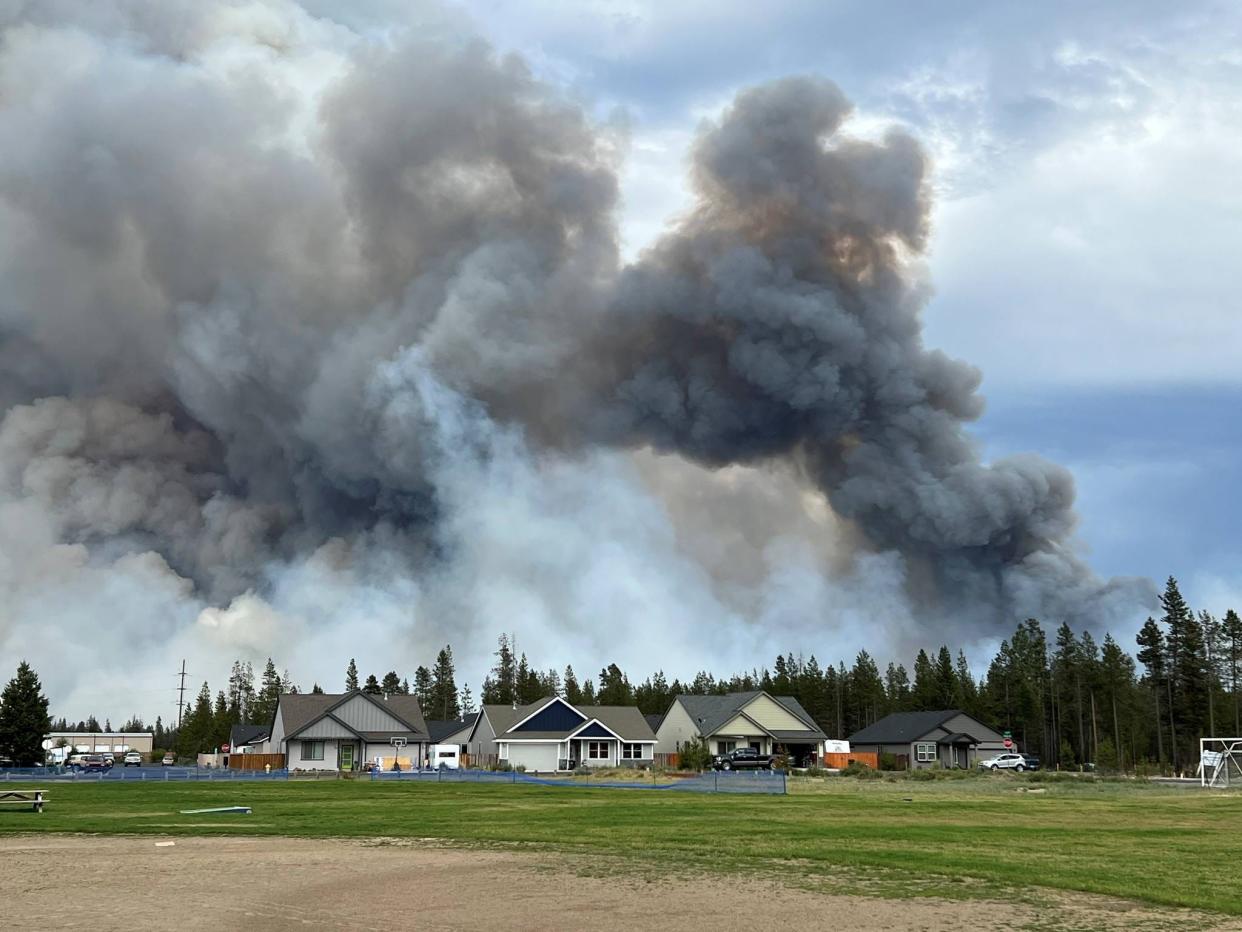
By most metrics, Oregon is heading into wildfire season in good shape for a quiet wildfire season.
Thing is, it doesn't feel that way with infernos bringing evacuations, smoke and even destruction across southern, central and eastern parts of the state this week.
As each year reminds us, with wildfire, you just never know until it happens.
What experts are saying about the 2024 wildfire season
There is reason to believe that this will be a quieter fire season.
There’s no drought statewide in June for the first time since 2017, according to the U.S. Drought Monitor.
It’s been a relatively cool late spring and early summer. And forecasters say the transition from El Niño to La Niña weather patterns could mean a wetter than normal summer.
“We’re in a pretty good spot,” said Jessica Neujahr, wildfire spokeswoman for the Oregon Department of Forestry. “It’s actually a little bit similar to what we used to see heading into fire seasons in the 1990s and 2000s.”
With the exception of southeast Oregon’s rangeland, most of the state is forecast to see a typical or even quiet season.
“I think the region as a whole will end up with below normal fire activity,” Jon Bonk, fire weather meteorologist for the Northwest Coordination Center, said at a meeting where he briefed Oregon’s congressional delegation on the upcoming fire season.
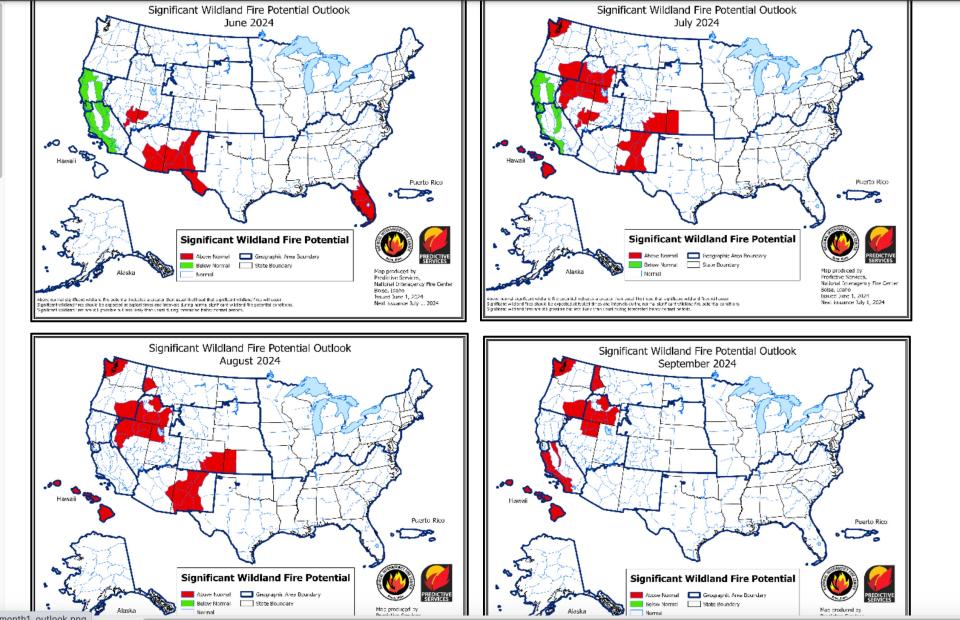
But Bonk pointed out — and this past week illustrated — a forecast doesn't mean much once the winds start blowing, lightning flashes and humans spark fires. All three already took place in the space of one week.
The 2020 wildfire season — the worst in Oregon’s history — had very little fire activity until a historic east windstorm hit in early September. Hotter summers and more people in the forest also make forecasting wildfires more difficult than ever.
“It’s all about confidence, and I wouldn’t say we have the confidence to say it’s going to be a below normal fire season,” Bonk said.
Active wildfires already roil central, eastern, southwest Oregon
Oregon already has seen a spate of impactful wildfires this season.
The Darlene 3 Fire in Central Oregon ignited and grew rapidly on Tuesday, throwing up massive smoke plumes above La Pine (population 2,536) and prompting level 3 "go now" evacuation orders across the east side of town. As of press time, it had blackened 3,889 acres but was 50% contained — a big accomplishment that required a major effort from hundreds of firefighters along with aircraft and heavy equipment.
To the east, a lightning strike ignited the 17,900-acre Little Valley Fire, the state's largest, near Ontario. Meanwhile, the Long Bend Fire near Maupin briefly closed the Deschutes River to rafting and the Upper Applegate Fire, which was human-caused, brought evacuations and required 400 firefighters to quell the blaze in southern Oregon.
“Even in this type of year, we’re still going to see some large wildfires,” said John Saltenberger, fire weather program manager for NWCC.
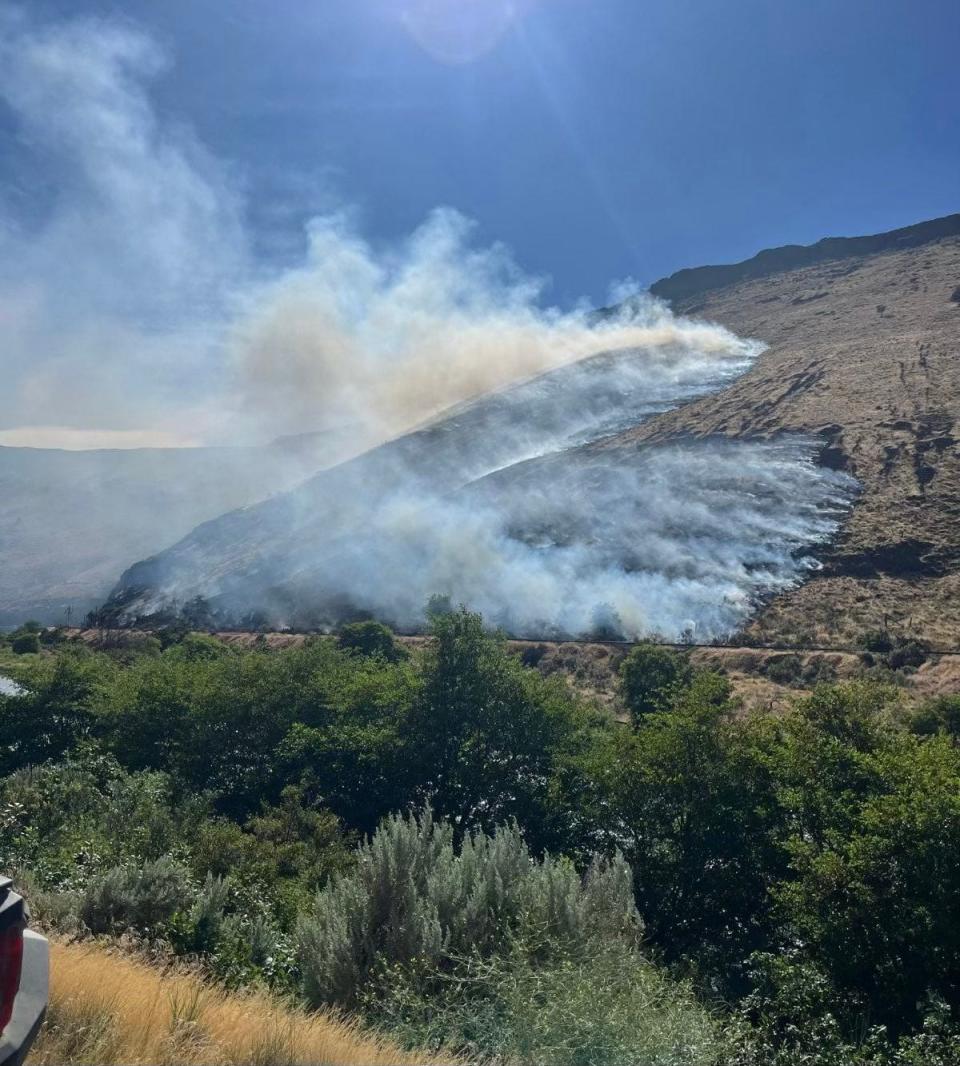
Fire season normally begins in northwest Oregon in July
Northwest Oregon has remained relatively quiet. This wetter and cooler part of the state typically enters fire season around early July.
The rest of the state enters fire season earlier and is in fire season currently. Both Central Oregon and Southern Oregon forests have outlawed campfires except in designated campgrounds and placed other restrictions on open flames and cooking.
Why are experts predicting a quieter season?
In projecting a quieter wildfire season, Bonk looked at drought, fuel moisture, long-term weather projections and other factors. But one place he zeroed in on was the transition from an El Niño to La Niña weather pattern.
He looked at past years with similar conditions and picked out 2010 and 2016 as “analog years” where weather patterns were similar to this year. Both of those turned out to be some of the state’s quietest wildfire seasons. In 2010, about 87,000 acres burned, and in 2016, 220,000 acres burned — both well below normal.
Over the past decade, Oregon has burned an average of over 600,000 acres per year.
“We’re expecting more onshore flow from the Pacific, which typically means higher precipitation amounts and more frequent weather systems,” he said. “The thunderstorms (instead of coming from inland) tend to come off the Pacific with more moisture.”
Bonk said that in 2010, the state had above average lightning but that it came with wetter systems. And in 2016, which represented a warmer scenario, there was a lower lightning strike count than normal.
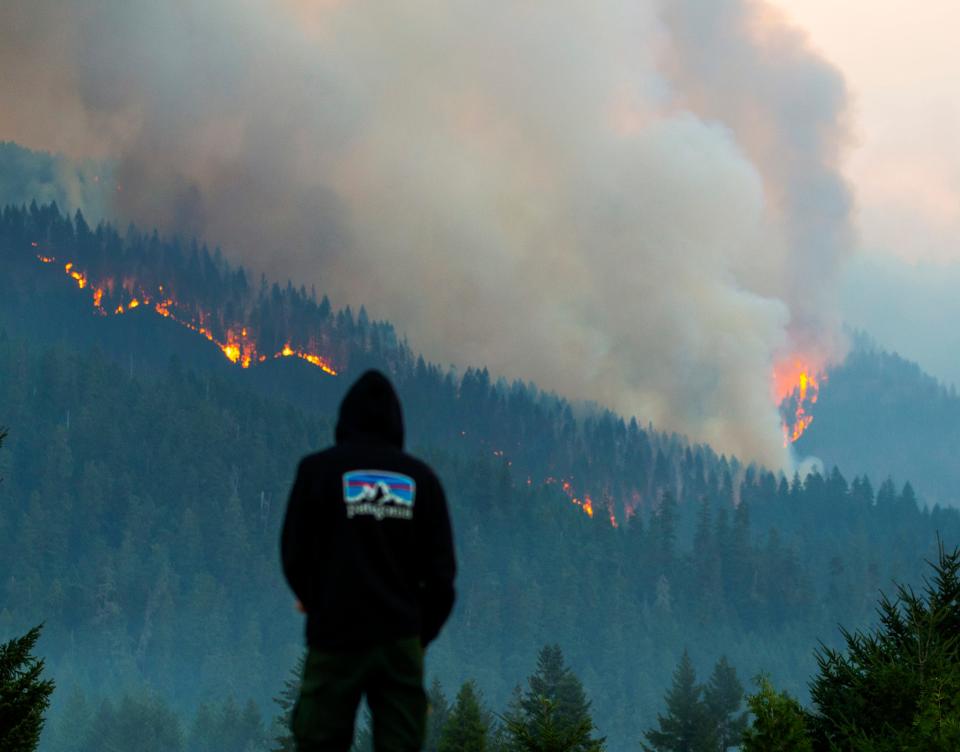
Forecasts can always be wrong
In 2017, there were signs that it could be a quiet wildfire season. There had been an excellent snowpack, no drought, and it had generally been a wet year.
The Statesman Journal published a story quoting experts saying it could be a quieter wildfire season than normal.
That, of course, didn’t happen. Instead, it was one of Oregon's worst wildfire seasons, with the Eagle Creek, Chetco Bar, Milli and Whitewater fires bringing some of the scariest wildfires in recent history.
“August and September always arrive, it’s almost always dry, and at that point it’s very difficult to predict what’s going to happen,” Neujahr said.
Higher than normal fire danger for southeast Oregon
The one place Oregon has above-normal fire danger is the southeast rangeland.
“We’ve seen two years of buildup of fuel from the rain, so we’re anticipating more fires than normal in the southeast,” Saltenberger said. The area is also expected to see a decent number of lightning strikes — something that happened last week.
Those would largely be grass fires in areas that are not heavily populated.
Rangeland Fire Protection Associations, a nonprofit, is the lead group often fighting fires in that remote part of the state.
“They operate on a really tight budget but play a huge role,” Neujahr said.
Central Oregon also has some area of “abnormal dryness,” according to the U.S. Drought Monitor. And wildfires have been popping up there as well.
“We’re keeping an eye on that area as well,” Neujahr said.
Urban wildfires on the rise in Oregon
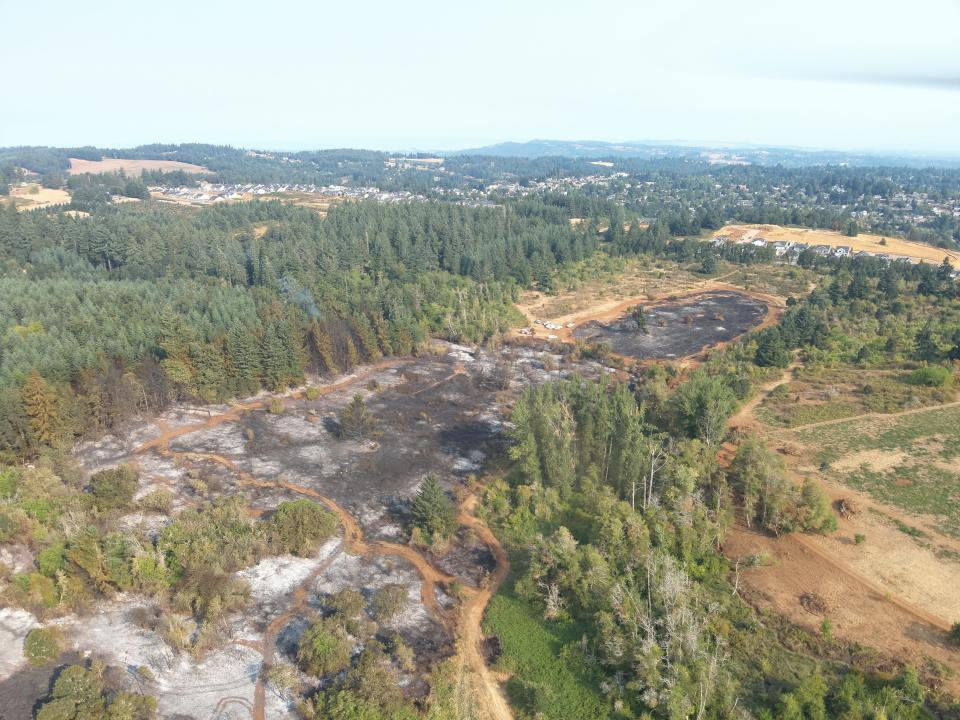
One of the biggest trends from the 2023 wildfire season — and the last few years overall — has been the rise of urban wildfires. For the past three years, residents of south Salem have faced evacuations due to fast-growing wildfires. Multiple wildfires outside Eugene brought evacuations last summer.
Neujahr said hotter summers in metro areas have brought fire danger to places people aren't used to it.
"We're seeing more human-caused fires in areas where fuels are drying out in ways they didn't in the past," she said. "There seems to be a learning curve where people have trouble getting used to the fact that maybe they can't pile burn as late in the summer as they could when they were growing up. There isn't an awareness of what could ignite and spread a fire."
A good example is the Liberty Fire in south Salem, which last summer led to the evacuation of 600 residents and cost more than $1 million to fight. A report on the fire's cause and origin revealed the fire likely ignited when the hot exhaust of an ATV contacted dry vegetation. Two years earlier, the Vitae Springs Fire sparked when a car crashed into a telephone pole near tall grass and ignited a brush fire. Firefighters narrowly contained it to 15 acres.
"It's just becoming easier for fires to get started and spread," Neujahr said.
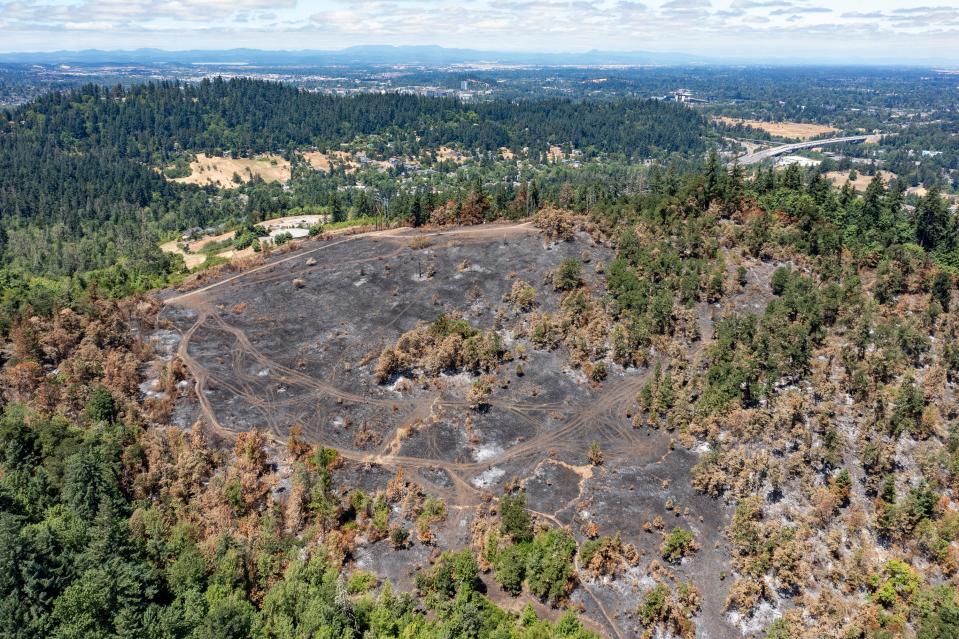
Firefighter staffing in Oregon
One issue that could plague the Northwest this summer is whether the state has enough wildland firefighters.
The U.S. Forest Service said it was at about 80% of firefighting capacity this season.
“We continue to struggle to staff at our full level,” said Ed Hiatt, assistant director for fire, fuels and aviation management for the Pacific Northwest Region of the Forest Service.
Neujahr said the Oregon Department of Forestry was staffing close to previous years with about 700 firefighters and wasn’t facing a major shortfall.
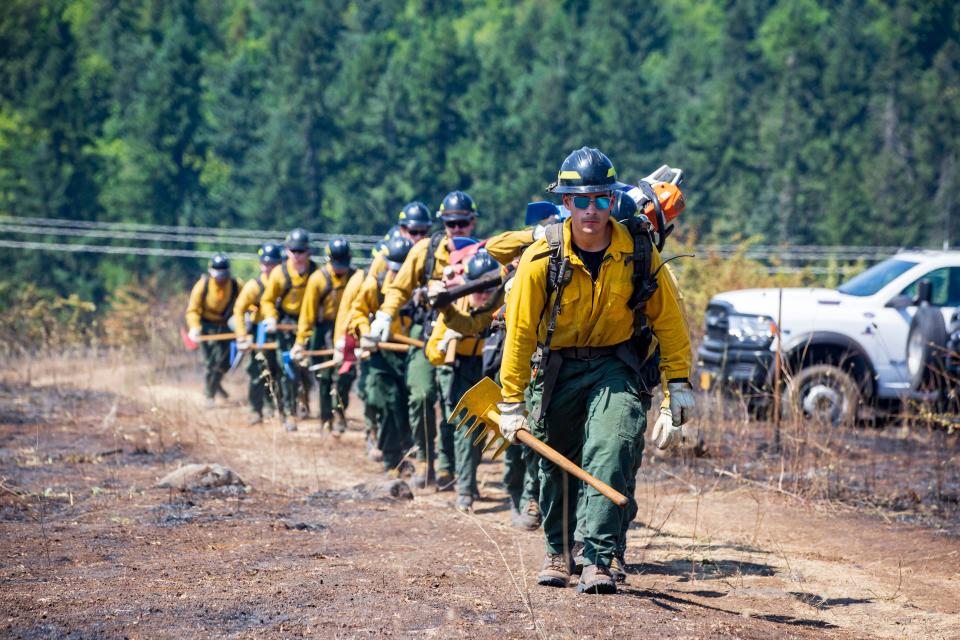
Hurricane season could limit emergency personnel numbers
Another possible drain on emergency personnel is the likelihood of a busy Atlantic hurricane season.
“The hurricanes obviously aren’t going to hit us, but what happens is that once they make landfall, there is a big demand on resources and emergency personnel,” Saltenberger said. “And their peak hurricane season — late August and September — comes at almost exactly the same time. It just creates a lot of competition for emergency relief.”
Mountaintop cameras, with some using AI, monitor wildfires
There has never been more eyes on Oregon’s forests, thanks to the proliferation of remote mountain cameras.
ODF’s system of mountaintop cameras numbers 77 statewide, and will grow to 95 in the next two years. The cameras are watched by remote fire-watching centers in multiple parts of the state.
In addition, the Oregon Hazards Lab at the University of Oregon — in partnership with ALERTWest — currently operates 45 remote cameras with plans to deploy 30 more. All firefighting agencies can tap into that system, which also uses artificial intelligence to monitor for smoke.
“When the algorithm detects smoke or heat, someone verifies it’s an actual incident, and then it goes out to dispatch,” Doug Toomey, UO professor of earth sciences and director of OHAZ, said in a news release. “This enables faster response times and helps fire managers better allocate resources when battling many blazes at once.”
Zach Urness has been an outdoors reporter in Oregon for 16 years and is host of the Explore Oregon Podcast. Urness is the author of “Best Hikes with Kids: Oregon” and “Hiking Southern Oregon.” He can be reached at zurness@StatesmanJournal.com or (503) 399-6801. Find him on X at @ZachsORoutdoors.
This article originally appeared on Salem Statesman Journal: What is the 2024 forecast for Oregon wildfires?

